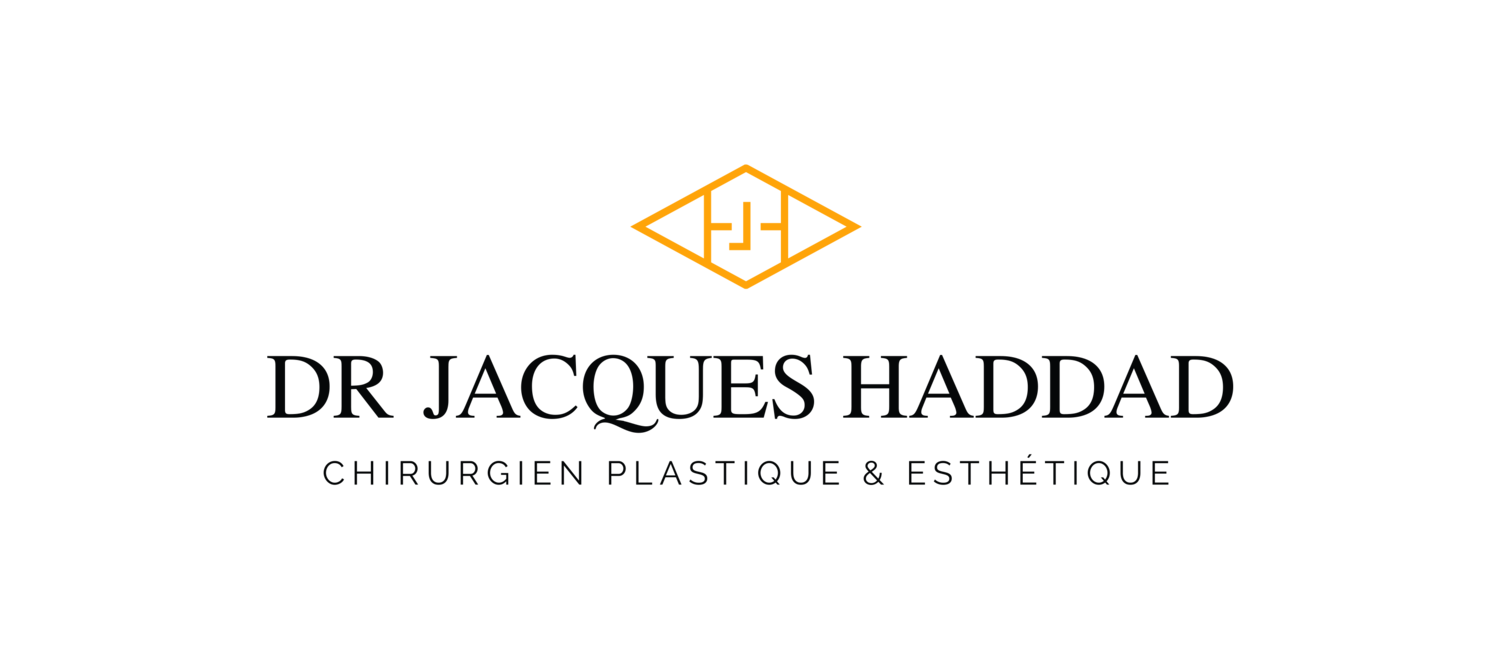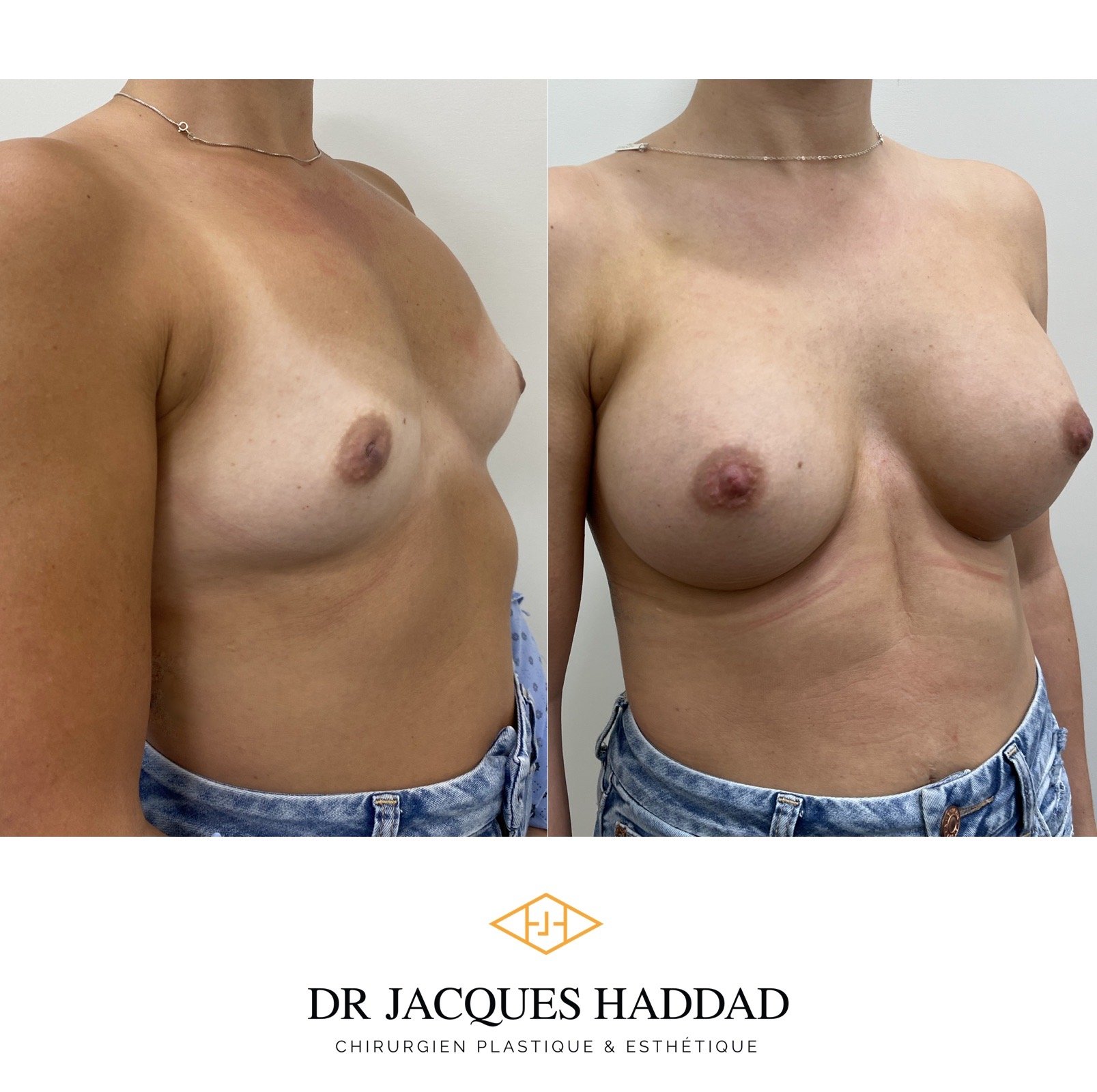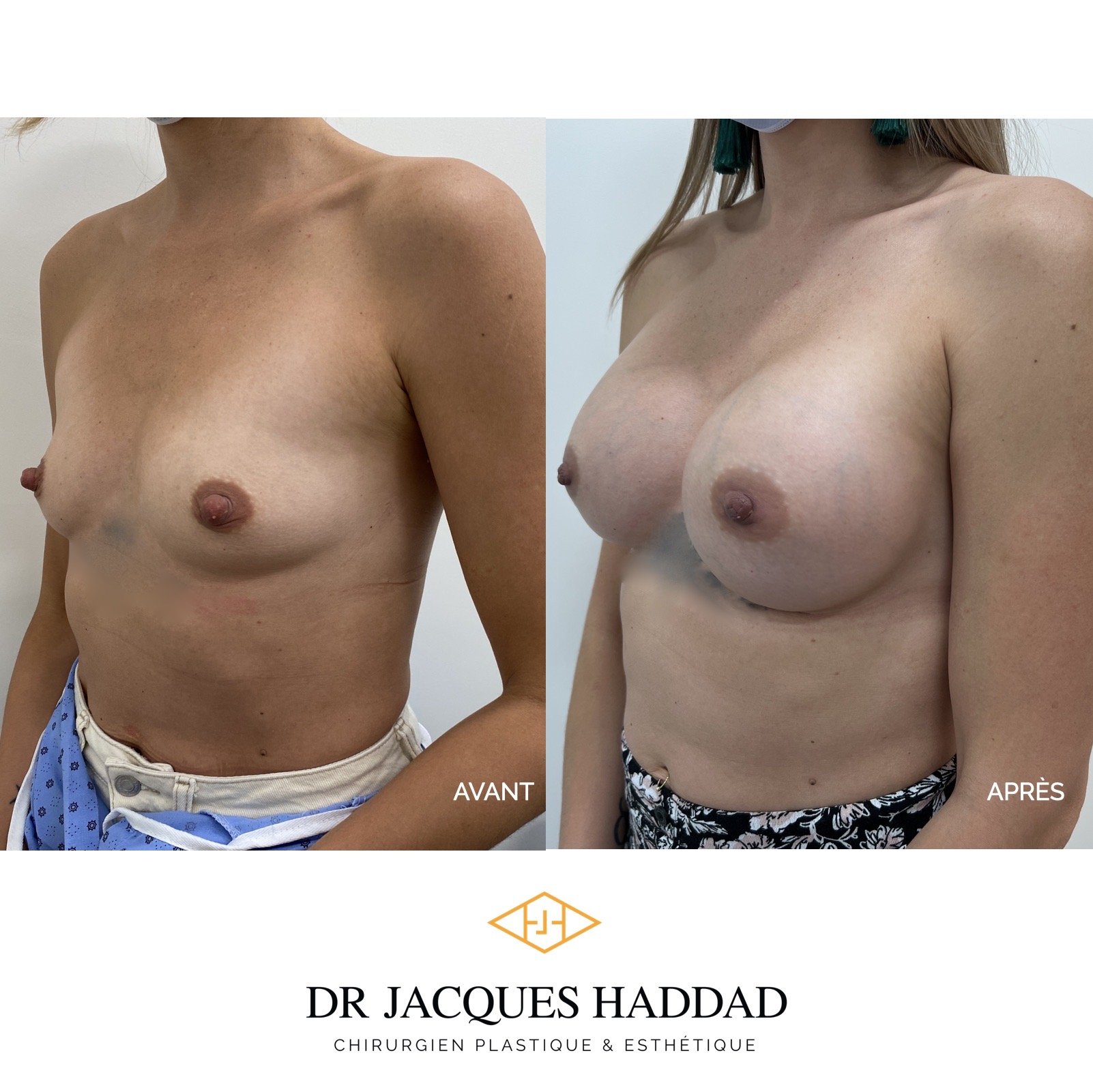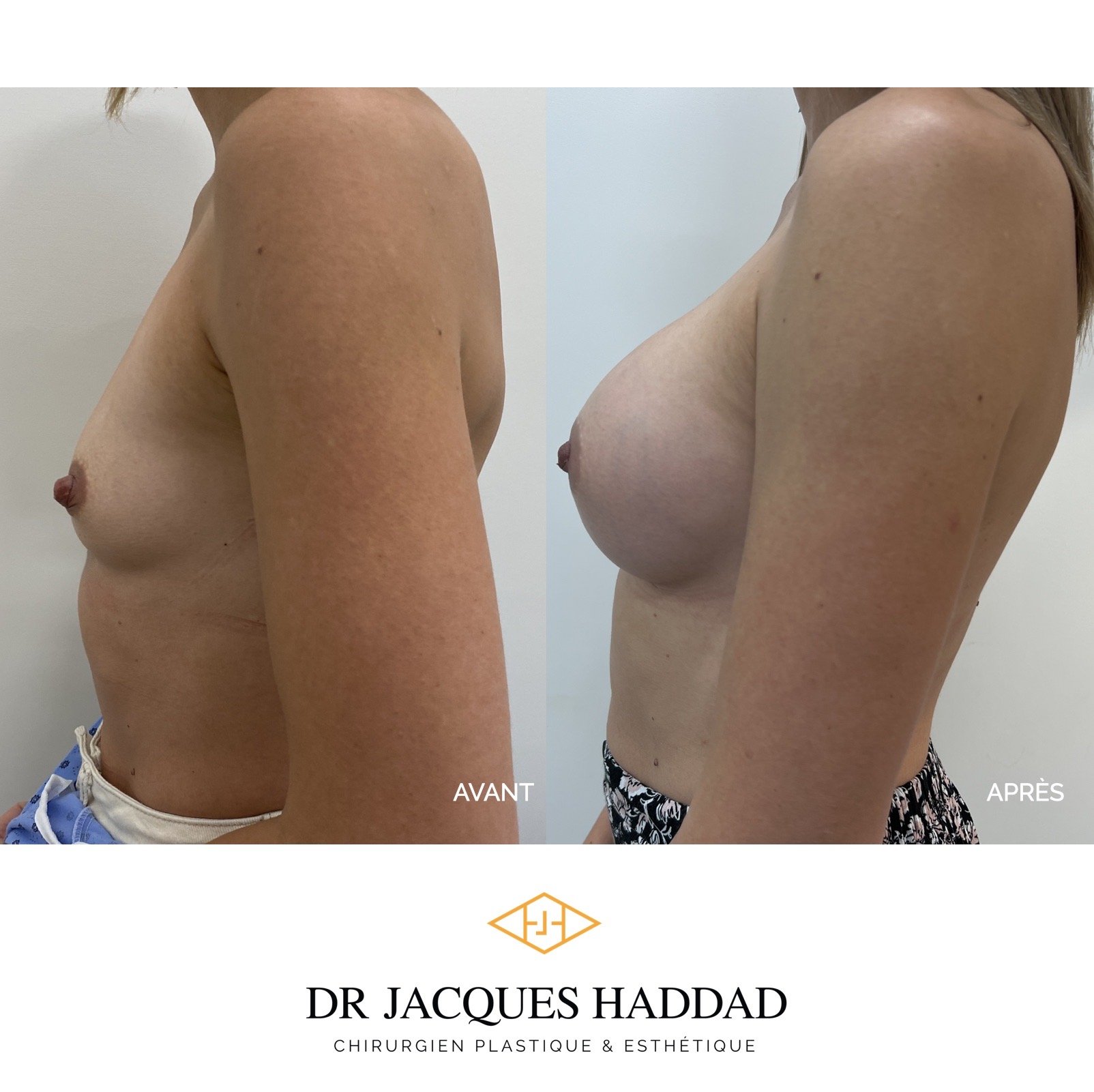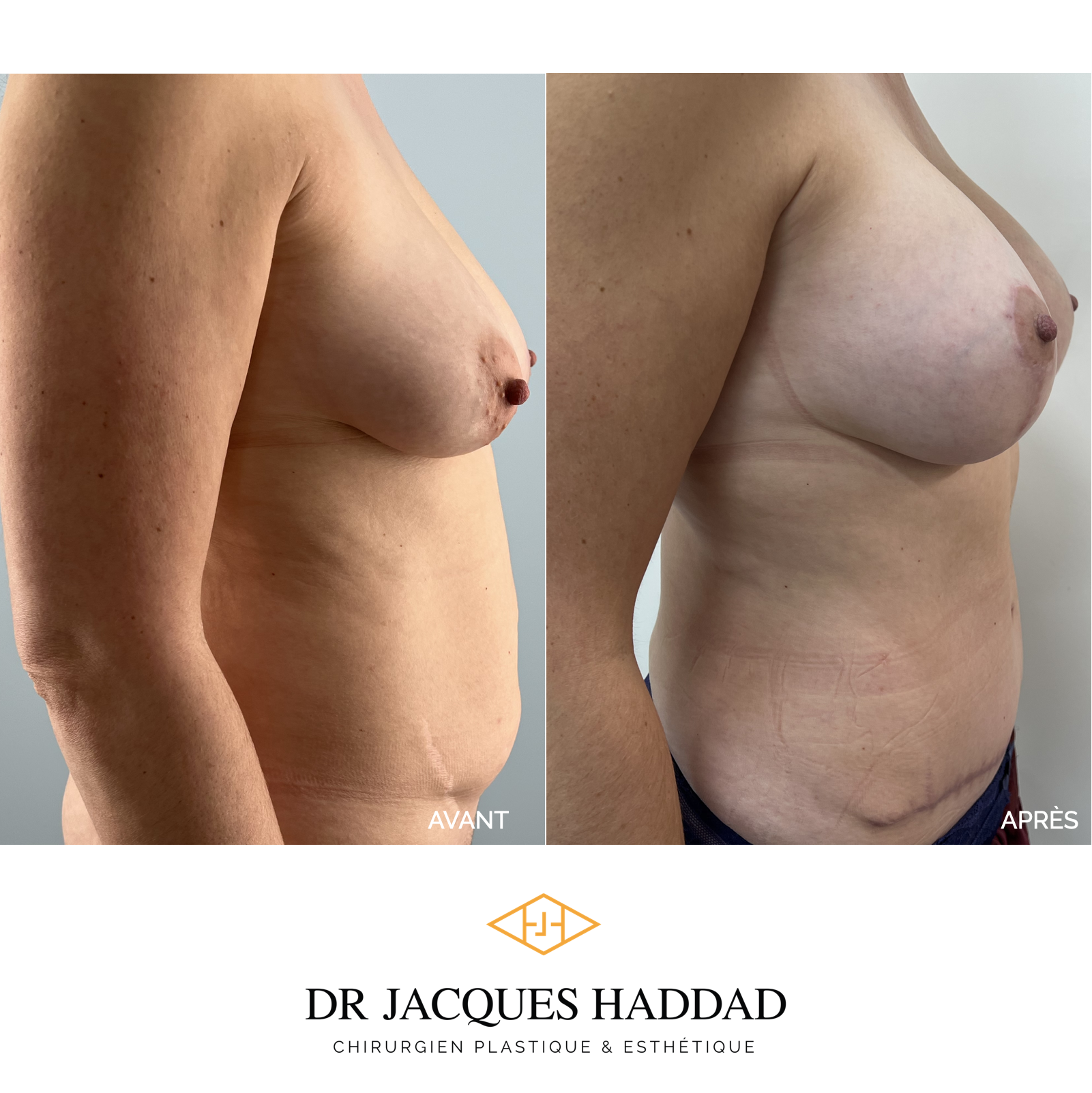Breast Augmentation
-
The breast implant technique
Two types of implant are available: saline or silicone. Various locations can be envisaged, such as in front of or behind the pectoral muscle. Different incisions are available: inframammary, axillary and periareolar. This surgery can be combined with a redrapage if the descent of the breast is significant. Surgery is performed under general anaesthetic.
-
Recovery
It is preferable to sleep with the head elevated for the first few days, if possible. Movement of the arms and lifting of objects are permitted according to the patient's tolerance. Avoid bathing for the first month after surgery. Showering is permitted after 48 hours of surgery, once the dressing has been removed. Wearing a bra is essential, especially during the first week. Massage of the implants and scar, and application of silicone cream, are carried out according to specific guidelines. 7-10 days off work, depending on occupation. Physical exercise 2-4 weeks after surgery, depending on patient tolerance.
-
Complications
Short-term: bleeding, infection. Long-term: implant rupture, implant malposition, poor healing, reduced breast sensitivity. Palpable implant. Capsular contracture and implant hardening
-
Preparing for surgery
Stop smoking, avoid blood thinning medication. Respect the fasting required and take care to clean the skin well with an antiseptic soap.
-
What to watch for after surgery
Short term: severe swelling, fever, discharge. In the long term: hardening of the prostheses, loss of volume.
-
Associated fees
from $7,650 (plus taxes)
275cc silicone
275cc silicone
350cc silicone
350cc silicone
300cc silicone
300cc silicone
375cc silicone
375cc silicone
375cc silicone
350cc silicone
350cc silicone
350cc silicone
400cc silicone
400cc silicone
400cc silicone
425cc silicone
425cc silicone
425cc silicone
Post-op 6-month "Mommy Makeover": addition (350cc silicone) and breast lift, abdominoplasty and 360° liposuction
Post-op 6-month "Mommy Makeover": addition (350cc silicone) and breast lift, abdominoplasty and 360° liposuction
Post-op 6-month "Mommy Makeover": addition (350cc silicone) and breast lift, abdominoplasty and 360° liposuction
425cc saline (380cc implant inflated to 425cc)
425cc saline (380cc implant inflated to 425cc)
425cc saline (380cc implant inflated to 425cc)
325cc left 300cc right silicone
325cc left 300cc right silicone
325cc left 300cc right silicone
325cc right, 375cc left (silicone)
325cc right, 375cc left (silicone)
325cc right, 375cc left (silicone)
400cc right, 375cc left (silicone)
400cc right, 375cc left (silicone)
400cc right, 375cc left (silicone)
-
You should know that breasts are rarely symmetrical! There are two types of symmetry: symmetry of volume and symmetry of shape. Surgery can adjust the volume either by decreasing the larger one or conversely, by increasing the smaller one. However, even if the volume is adjusted, the shape is not necessarily adjusted. With time, the skin adjusts and the shape of the two breasts becomes closer. In summary, breasts are often asymmetrical and surgery can reduce the difference between the two breasts without completely erasing it.
-
The recovery from a breast augmentation depends mainly on the location of the breast implant. The pain is greater if the implant is used behind the pectoral muscle. In this case, the recovery time is around one week for someone who does office work and up to 2 weeks for someone who does physically demanding work with the upper limbs. When the implant is in front of the muscle, one week of recovery is on average sufficient for a return to work.
-
The scar becomes waterproof 48 hours after surgery. We recommend delaying showering for 2 days after surgery. At this time, the operated area can be wet and washed directly with soap and water. There is no problem with wetting the dressings or tights. With implants, which are considered a foreign body, it is best to avoid bathing, swimming and sauna for a period of one month after the surgery.
-
Whether or not to wear a bra depends on a number of aspects, including the surgical technique used and the immediate result after surgery. Your surgeon is best placed to guide you in this area, and of course, everyone is different!
-
The main limitation with regard to physical activity following surgery is pain. Surgery involving an implant behind the muscle requires a longer recovery time. There are no strict contraindications to post-surgery activities. You have to listen to your body! The patient should go gradually as long as there is no pain. Before returning to running, you should allow 3 to 4 weeks and above all, get a bra with good support.
-
As soon as healing is sufficiently advanced, on average after 3 months. If there is an emergency, your surgeon can guide you in this process. Other alternative tests are available if mammography is not possible. Mammography is important to have, even if you have had the same implant in place for more than 15 or 20 years.
-
This protocol is random and depends on the surgeon. The idea behind this practice is to move the prosthesis in order to prevent it from remaining fixed and hardening. We recommend moving the implant in all directions from the second week of surgery, as soon as there is sufficient healing. The massage can be done gradually and for a few minutes a day, depending on the patient's convenience. In addition to recommending massage of the prosthesis, it is suggested that the patient lie on her stomach for a few minutes a day (beyond one month following surgery). These recommendations remain relevant throughout life, as they promote the continued flexibility of the prosthesis.
